DIEGO RIVERA: MURALS FOR THE MUSEUM OF MODERN ART
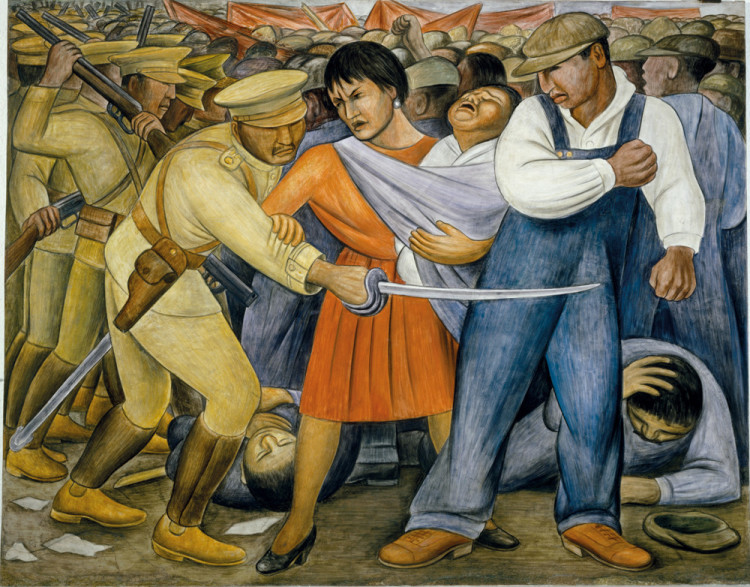
DIEGO RIVERA: MURALS FOR THE MUSEUM OF MODERN ART REUNITES FOR THE FIRST TIME MURALS THE ARTIST MADE FOR HIS 1931 MoMA EXHIBITION
Diego Rivera: Murals for The Museum of Modern Art
November 13, 2011–May 14, 2012
The Michael H. Dunn Gallery, second floor
The Museum of Modern Art, 11 West 53 Street, New York, NY 10019, (212) 708-9400, MoMA.org
Download: MoMA_DiegoRivera2011_PressRelease_Spanish
NEW YORK, October 31, 2011—The exhibition Diego Rivera: Murals for The Museum of Modern Art reunites, for the first time in 80 years, five “portable murals,” freestanding frescoes with bold images addressing the Mexican Revolution and Depression-era New York that Rivera created at the Museum for his 1931–32 MoMA retrospective. The exhibition is on view at MoMA from November 13, 2011, to May 14, 2012. The murals, which are up to six feet by eight feet in size and weigh as much as 1,000 pounds, are made of frescoed plaster, concrete, and steel.
Comprising five of the eight murals that were shown in the 1931-32 exhibition, they are drawn from public and private collections in the United States and Mexico, including MoMA’s own collection. Diego Rivera: Murals for The Museum of Modern Art is organized by Leah Dickerman, Curator, Department of Painting and Sculpture, The Museum of Modern Art. MoMA is the exhibition’s sole venue.
In addition to the murals, the exhibition features three eight-foot working drawings; a prototype “portable mural” made in 1930; as well as smaller drawings, watercolors, and prints by Rivera. The exhibition also includes materials related to Rivera’s infamous Rockefeller Center mural, a project he began to discuss while in residence at the Museum.
Ms. Dickerman states, “The story of this extraordinary commission for The Museum of Modern Art brings to life Diego Rivera’s pivotal role in shaping debates about the social and political role of public art during a period of economic crisis in the United States.”
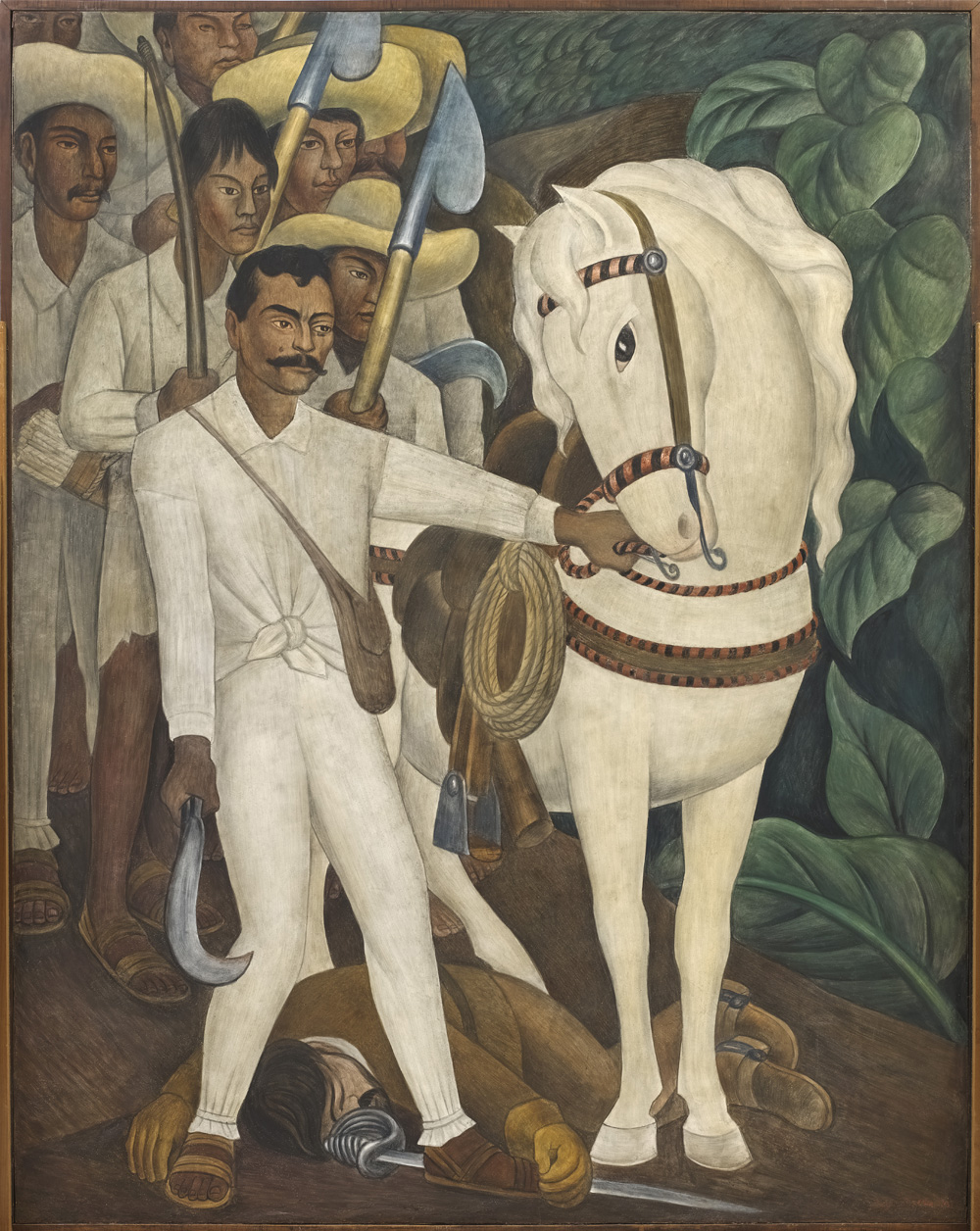
By 1931 Rivera was the most visible figure in Mexican muralism, a large-scale public-art initiative that emerged in the 1920s in the wake of the Mexican Revolution. But his murals—by definition fixed on a single site—were impossible to transport for exhibition. To solve this problem, the Museum brought Rivera to New York six weeks before the show opened and provided him with a makeshift studio in an empty gallery in the Museum’s original building. Working around the clock with three assistants, Rivera produced five “portable murals,” large blocks of frescoed plaster, concrete, and steel that feature bold images commemorating Mexican history. Four of these five panels featured images borrowed, with some adaptations, from the mural cycles in Mexico that had established Rivera’s reputation. At MoMA these images formed a new cycle: a series of historical snapshots of Mexican power relationships. Together they present the nation in a continual state of revolution—from the Spanish Conquest in the 16th century to labor unrest in the decade in which they were made. The first of these panels to be made, Agrarian Leader Zapata, later joined MoMA’s collection, and is now a familiar icon on the Museum’s walls.
After the exhibition’s opening, Rivera added three more murals, each depicting labor and construction in Depression-era New York. The city’s advanced industrialization provided Rivera with exciting modern subjects for his murals, while its economic inequities offered ample opportunity to scrutinize class and power in the United States. All eight panels were on display for the duration of the exhibition’s run.
The five murals from the 1931 retrospective that are on view in Diego Rivera: Murals for The Museum of Modern Art are Agrarian Leader Zapata (1931), Indian Warrior (1931), The Uprising (1931), Frozen Assets (1931–32), and Electric Power (1931–32). Two of the three remaining murals—Liberation of the Peon (1931) and Pneumatic Drilling (1931–32)—are represented in the exhibition through full-scale working drawings. The exhibition also features archival materials, including designs and photographs drawn from MoMA’s archives, related to the commission and production of the works.
THE PORTABLE MURALS The portable mural Agrarian Leader Zapata depicts Emiliano Zapata, a champion of agrarian reform and a key protagonist in the Mexican Revolution, leading a band of peasant rebels armed with provisional weapons, including farming tools. With the bridle of a white horse in his hand, Zapata stands triumphantly beside the dead body of a hacienda owner. Though Zapata was often vilified in contemporary press as a treacherous bandit, Rivera immortalized him as a hero and glorified the victory of the Revolution in an image of violent but just vengeance. In addition to Agrarian Leader Zapata, a large-scale cartoon study of the work along with an X-ray of the mural are on view. The latter reveals the internal skeleton of one of Rivera’s portable murals for the first time.
Of all the panels Rivera made for MoMA, Indian Warrior reaches back farthest into Mexican history, to the Spanish Conquest of the early 16th century. An Aztec warrior wearing a jaguar costume stabs an armored conquistador in the throat with a stone knife. The details of Aztec culture in the image reflect Rivera’s extensive study of pre-Columbian art, of which he was an avid collector. Simultaneously, the work demonstrates the artist’s intimate knowledge of European artistic tradition—the conquistador’s sharply foreshortened body and carefully modeled armor recall works by Renaissance masters, which Rivera studied firsthand on an extended trip to Italy in 1920.
In The Uprising, a woman in modern dress with a baby at her hip and a man dressed like an urban worker fend off an attack by a uniformed soldier. Behind them, a riotous crowd clashes with more soldiers, who force demonstrators to the ground. In the early 1930s, an era of widespread labor unrest, images of the violent repression of strikes would have resonated with both U.S. and Latin American audiences. The red banners and clenched fist that rise above the crowd offered internationally comprehensible signs of workers’ resistance.
Situated below a view of New York City’s jagged skyline, a steel-and-cement power plant interior dominates Electric Power. While there were no major hydroelectric plants in sight of the city when Rivera made the work, the technology was a major topic in the United States; the Federal Power Act was revised in 1930, and construction began on the Hoover Dam in 1931. Rivera peeled back his plant’s facade to bring the workers—deep in the inner workings of its machinery—into the space of the viewer, exposing the human labor that powers the modern city.
In Frozen Assets, the most ambitious and controversial of Rivera’s New York–themed panels, the artist coupled his appreciation for the city’s distinctive vertical architecture with a critique of its economic inequities. The panel’s upper portion features a dramatic sequence of recognizable skyscrapers, most of which had been completed within a few years of Rivera’s arrival in the city. In front of them are cranes and the steel frames of buildings in progress—emblems of New York’s construction boom. In the middle section, a steel-and-glass shed serves as a shelter for rows of sleeping men, evoking the dispossessed labor that made such growth possible. Below, a bank’s waiting room accommodates a guard, a clerk, and a trio of figures eager to inspect their mounting assets in the vault beyond. Rivera’s jarring vision of the city struck a chord in 1932, at the nadir of the Great Depression.
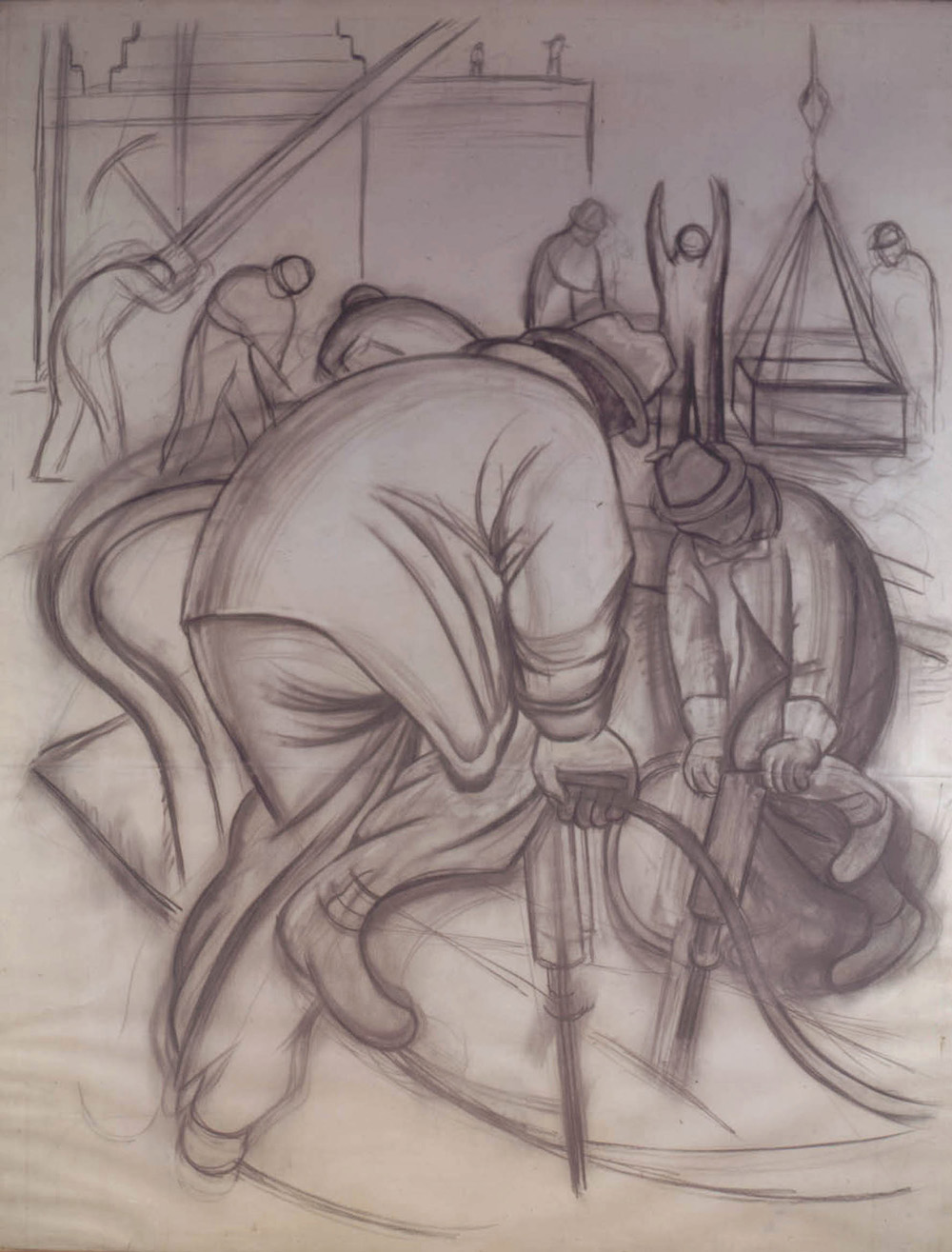
Large-scale cartoon drawings for two of the murals not in the exhibition are also on view. In the drawing for Liberation of the Peon, Rivera developed a harrowing narrative of corporal punishment. It features a laborer, beaten and left to die, cut down from a post by sympathetic revolutionary soldiers, who tend to his broken body. In the drawing for Pneumatic Drilling, two figures use a pneumatic drill and jackhammer to bore into Manhattan’s granite foundation. Rivera later identified this scene as depicting preparations for the construction of Rockefeller Center, at the time the largest building project ever funded wholly by private capital. Because the surface of a fresco panel dries quickly, Rivera used full-scale cartoons like these to develop his compositions before applying pigment to the wet plaster. He would then transfer them to or replicate them on the mural’s surface.
ADDITIONAL WORKS
Additional works related to the 1931 commission are also on view, including The Rivals (1931), a large-scale painting that depicts a fiesta in Tehuantepec, an area in the south of Mexico that Rivera first visited in 1922. Abby Aldrich Rockefeller, one of the founders of MoMA and an important collector of Rivera’s work, commissioned this canvas as part of a significant purchase of paintings and sketches that helped defray the cost of the artist’s trip to New York for his exhibition at MoMA.
Also on view is Market Scene, which depicts an Indian woman and child offering a tribute of fruit and fish to a Spanish conqueror. This work, from 1930, was Rivera’s first attempt to create a portable mural. His experimentation may have been prompted by his upcoming retrospective at MoMA, which was then in the early planning stages. The artist’s innovative response—a freestanding fresco panel—allowed for both exhibition and sale of his mural work.
While Rivera was in New York in 1931, he began discussions for a commission at Rockefeller Center. Materials related to the commission are on view, including preparatory drawings for the Rockefeller mural, Man at the Crossroads, and photographs of the mural in progress, among other materials. Rivera began work on the mural in March 1933, but by mid-May he had been discharged from the project and his fresco covered with a tarp, concealed until it was chipped from the wall the following year. The most frequently cited reason for the sudden dismissal of the artist is Rivera’s inclusion of a portrait of Vladimir Lenin—a detail that provoked inflammatory headlines. Rivera’s patrons requested that he remove the offending image, but he refused.
Position the cursor on the images to view captions, click on images to enlarge them.
Posizionare il cursore sulle immagini per leggere le didascalie; cliccare sulle immagini per ingrandirle.
SPONSORSHIP:
The exhibition is made possible in part by BBVA Bancomer, with major support provided by the National Council for Culture and the Arts (CONACULTA).
The Museum acknowledges generous funding from David Rockefeller, Sue and Edgar Wachenheim III, and The Mexican Friends of Rivera: Dr. Abraham Franklin and Gina Diez Barroso de Franklin, Roberto and Aimée Servitje, Yvonne Dadoo de Lewis and Martin Lewis, Marie Thérèse Hermand de Arango, Juan Beckmann Vidal and Doris Legorreta de Beckmann, Timothy Heyman and Malú Montes de Oca de Heyman, and Enrique Norten.
Special thanks to our hotel sponsor, Hôtel Americano, Chelsea, New York.
Additional support is provided by the Consulate General of Mexico in New York and by the Mexican Cultural Institute of New York.
Support for the publication is provided by The International Council of The Museum of Modern Art.
PUBLIC PROGRAMS:
Communist Tour of MoMA
Wednesday, February 15, 2012, 6:00 p.m., Museum galleries
Artist Yevgeniy Fiks leads a performative tour of the exhibition Diego Rivera: Murals for The Museum of Modern Art, in which he discusses works on view in the context of the artist’s leftist politics. Tickets are available online at MoMA.org/talks, at the information desk in the main lobby, at the film desk after 4:00 p.m., and at the reception desk in the Education and Research Building one hour before the start of each program.
Diego Rivera: From Mexico to Manhattan
This three-part lectures series will address the culture and politics of early-20th-century Mexico, look at the influence of the Mexican Revolution and of Leon Trotsky on Rivera and his politics, and examine the controversial mural Rivera was commissioned to create for Rockefeller Center and the mural’s eventual removal from the building.
Rivera, Rockefellers, and the Art of Politics Wednesday, February 8, 2012, 6:00 p.m., Theater 3
Daniel Okrent, author of Great Fortune: The Epic of Rockefeller Center and a former public editor of the New York Times, speaks about the events surrounding the commission of the Rockefeller Center mural, addressing Diego Rivera’s relationship with the family and other members of the business elite, and his simultaneous involvement with, estrangement from, and reconciliation with the radical left.
Rivera and Mexico
Thursday, March 22, 2012 6:00 p.m., Theater 3 Journalist and writer Elena Poniatowska, who knew Rivera personally, discusses the social and political atmosphere in which he lived and worked and how it shaped his artistic practice in Mexico and beyond.
Rivera and Revolution
Monday, April 23, 2012, 6:00 p.m., Theater 3 Historian Alan Knight, Professor of the History of Latin America at the University of Oxford and author of The Mexican Revolution (Cambridge, 1986), will speak about the role of the Mexican Revolution in shaping Rivera’s politics and imagery.
Diego Rivera: Public Art and Politics in Mexico, the Soviet Union, and the United States
Friday, March 30, 2012, 3:00 pm, The Institute of Fine Arts, New York University, 1 East 78th Street, New York, NY At a symposium presented by New York University and The Museum of Modern Art, art historians Mary Coffey, Renato González Mello, Maria Gough, Alexander Nemerov, and Anna Indych-López will examine international debates about the role of public art in the 1920s and 1930s. A highly cosmopolitan figure, Rivera traveled between Mexico, the U.S., and Moscow during this period, and in the process shaped popular conceptions of muralism’s potential to affect social and political revolution. Leah Dickerman (Curator, Department of Painting and Sculpture, The Museum of Modern Art), and Edward J. Sullivan (Helen Gould Sheppard Professor of the History of Art, Institute of Fine Arts, New York University), will moderate. For more information about this event, please contact ifa.events@nyu.edu.
Brown Bag Lunch Lectures
December 12 and 15, 2011, 12:30 p.m. The Lewis B. and Dorothy Cullman Education and Research Building, 4 W. 54 St., Classroom B Diego Rivera: Murals for The Museum of Modern Art This lecture examines Diego Rivera’s work at the intersection of art making and radical politics in the 1930s. Jodi Roberts will conduct the lecture. Tickets are available online at MoMA.org/talks, atthe information desk in the main lobby, at the film desk after 4:00 p.m., and at the reception desk in the Education and Research Building 45 minutes before the start of each program.
AUDIO GUIDE: The accompanying audio guide features extensive commentary by Curator Leah Dickerman and Conservator Anny Aviram. The audio program is available in English and Spanish. MoMA Audio is also available for download at MoMA.org, at MoMA.org/wifi, and as a podcast on iTunes. MoMA Audio is available free of charge courtesy of Bloomberg.
PUBLICATION: The vividly illustrated publication Diego Rivera: Murals for The Museum of Modern Art presents all eight frescoes produced by Rivera for the 1931 exhibition in rich detail. An essay by curator Leah Dickerman discusses the history and context of Rivera’s fresco works; his political engagements in Mexico, the United States, and the Soviet Union; and his complex interactions with patrons. Anna Indych-López, a specialist in Mexican modernism, offers in-depth analysis of each of the eight fresco panels. Conservators Anny Aviram and Cynthia Albertson examine Rivera’s working process, materials, and technical innovations. Also included is a selected chronology of the artist’s life and work, focusing on the events that led to his New York show. Together these elements provide a compelling perspective on the intersection of art making and radical politics in the 1930s. 148 pages, 129 illustrations. Hardcover, $35. Available at the MoMA Stores and online at MoMAStore.org. Distributed to the trade through ARTBOOK | D.A.P. in the United States and Canada, and through Thames & Hudson outside North America.
Support for the publication is provided by The International Council of The Museum of Modern Art and by The Museum of Modern Art’s Research and Scholarly Publications endowment established through the generosity of The Andrew W. Mellon Foundation, the Edward John Noble Foundation, Mr. and Mrs. Perry R. Bass, and the National Endowment for the Humanities’ Challenge Grant Program.
WEBSITE:
The exhibition is accompanied by a website that enables visitors to explore the eight portable murals made by Rivera, including detailed annotations on the works. The site also features videos highlighting Rivera’s materials and technique, with MoMA Conservator Anny Aviram describing Rivera’s process of fresco painting. Audio from the Acoustiguide tour and interpretive texts will also be included. Text on the website is in English and in Spanish. The site launches on November 13, 2011. MoMA.org/diegorivera
Press Contact: Paul Jackson, (212) 708-9593, paul_jackson@moma.org Margaret Doyle, (212) 408-6400, margaret_doyle@moma.org
Public Information:
The Museum of Modern Art, 11 West 53 Street, New York, NY 10019, (212) 708-9400, MoMA.org Hours: Wednesday through Monday, 10:30 a.m.–5:30 p.m. Friday, 10:30 a.m.–8:00 p.m. Closed Tuesday

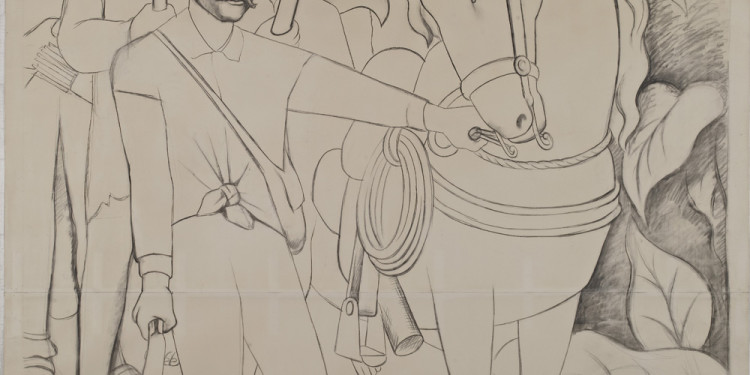
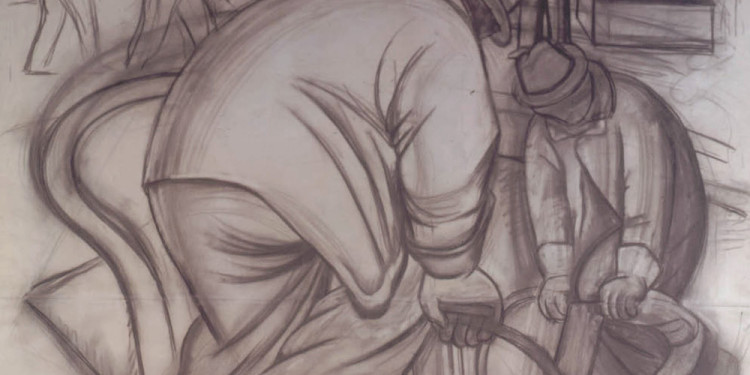
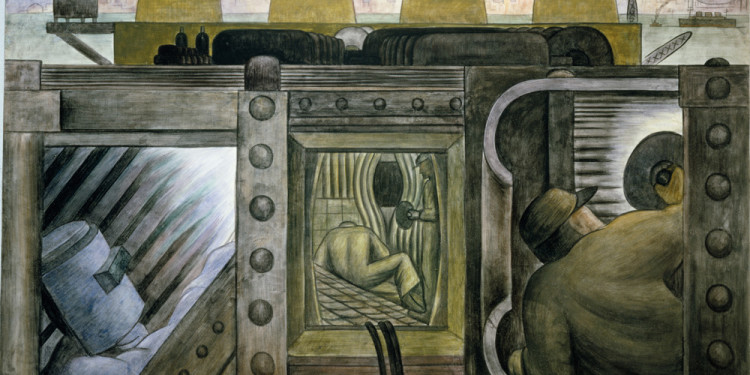
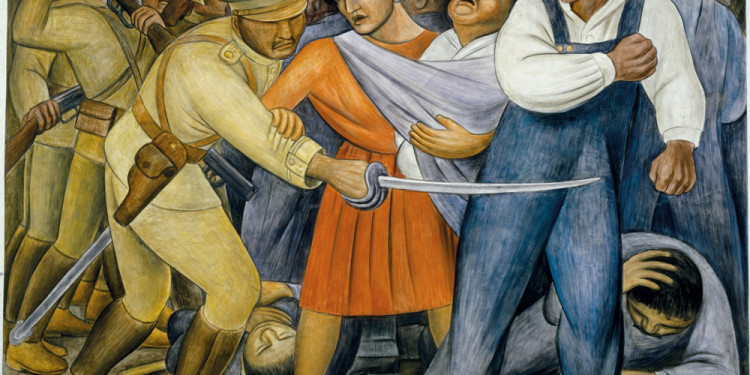
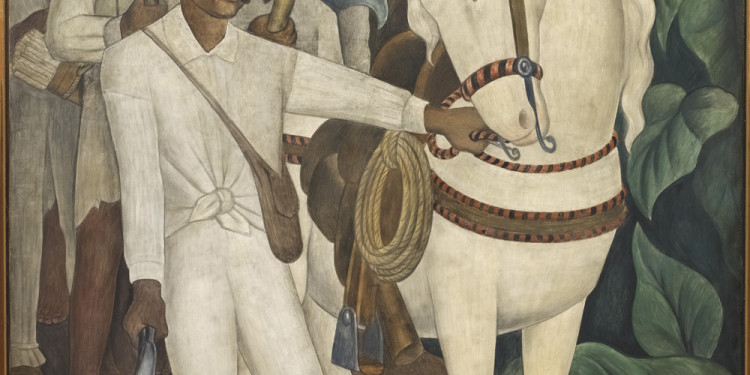
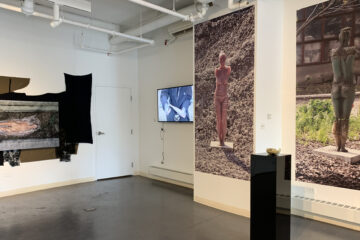
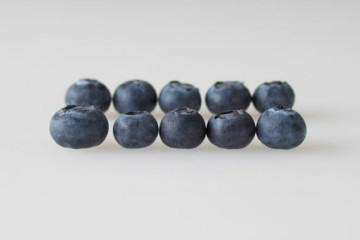

No Comment